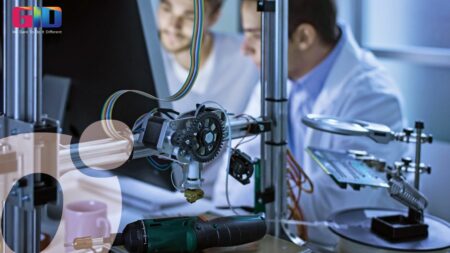Plastic Manufacturing Processes : Overview
When it comes to plastic product manufacturing, there are plenty of plastic manufacturing processes, enough to confuse a beginner and sometimes experienced entrepreneurs. Selecting the most suitable plastic manufacturing processes is quite essential as it ensures the development of a final product that meets exact precision and industry standards. To help entrepreneurs, here is the list of the most commonly used plastic manufacturing processes for manufacturing new plastic products, strictly obeying industry standard.
Methods of Manufacturing Plastic
Injection Molding Technique:
This is one of the most common plastic manufacturing processes used for manufacturing of plastic products across the globe. There are several reasons why the injection molding method is considered one of the best plastic manufacturing processes. In this process, molten plastic is injected into a mold core and cavity. Once the plastic solidifies under pressure, it is removed from the mold cavity for further processing. It is the most convenient manufacturing process; hence, it is widely used in bulk manufacturing or for developing a product prototype. In 1930, the first injection molding machines came into existence. Injection Molding Technique can be used to develop different types of plastic products such as kitchen utensils, toys, bottle caps, mobile cases, and cell phone stands to name a few. If you still have any questions, feel free to contact the plastic product manufacturer.
Blow Molding Technique:
Blow Molding Technique is somewhat identical to injection molding. The only difference between both plastic manufacturing processes is that in this process, molten plastic ejects out of a barrel vertically in a molten tube. The mold closes on it and forces it outward to conform to the inside shape of the mold. Once compacted, the hollow part is formed. Some of the best examples of blow molding techniques are tubes, bottles, and containers.
Compression Molding Technique:
In a Compression Molding Technique, a batch of hard plastic is compressed between two heated mold halves. Instead of horizontal force used for injection and blow molding, in this technique, vertical force is used. The plastic parts formed are then air-cooled.
Film Insert Molding Technique:
Film Insert Molding Technique attaches an image underneath the surface of a molded part. A material as fabric or film is inserted into a mold. Plastic is then injected. Film Insert Molding Technique is an advanced method used to apply labels and graphics to plastic parts during the molding process.
Gas Assist Molding Technique:
Gas Assist Molding Technique is also known as Gas Injection Molding. It is usually used to manufacture plastic parts having hollow interiors. A partial shot of plastic is then followed by high-pressure gas to fill the mold cavity with plastic. It is also used to produce huge plastic parts with complex designs and outstanding cosmetic and surface finishes. Gas Assist Molding Technique is best for manufacturing large handles, equipment covers, doors, bezels, cabinets, and skins.
Rotational Molding Technique:
Rotational Molding Technique involves a heated hollow mold, which is filled with powdered plastic. It is them perpendicularly rotated, causing the softened material to disperse and stick to the walls of the mold. The mold continuously rotates to ensure uniform thickness and avoid sagging or deformation during the cooling phase. In the 1940, this process was applied for the first time for manufacturing new plastic products. The Rotational Molding Technique has many advantages and can be used for manufacturing products such as furniture, toys, planters, footballs, road signs and bollards, storage tanks, road cones, pet houses, bins and refuse containers, doll parts, canoes, kayak hulls, rowing boats, helmets and playground slides.
Structural Foam Molding Technique:
Structural Foam Molding Technique is used for manufacturing plastic parts that need thicker walls than standard injection molding. In this manufacturing process, a small quantity of a chemical blow agent or nitrogen is added to the plastic material to make the walls thicker. This type of product manufacturing technique is used with any thermoplastic that can be injection molded.
Thermoforming Technique:
In a Thermoforming Molding Technique, sheets of pre-extruded rigid plastics are horizontally heated and sucked down into hollow one-piece tools. Once condensed, it acquires the shape of the mold. This manufacturing method is used for developing heavy-gauge items such as plastic siding, aircraft windscreens, and hot tubs.
Plastic manufacturing processes is a very technical; therefore, it is recommended to contact an experienced Plastic Product Manufacturer such as the GID Company in California, USA. Here are some useful tips to find a top-notch Plastic Product Manufacturing Company in the USA. For instant help, call the GID Company at 714-323-1052, as they are offering a free 15-minute consultation.

















